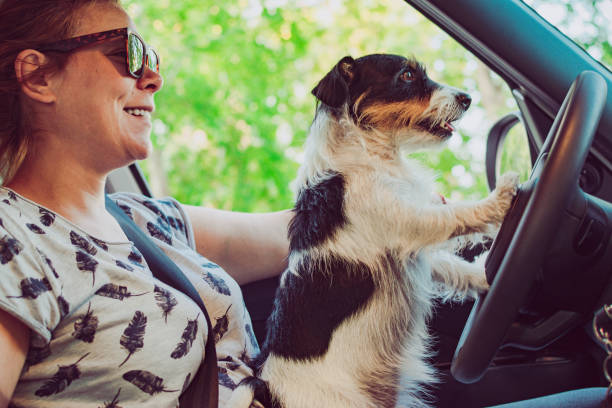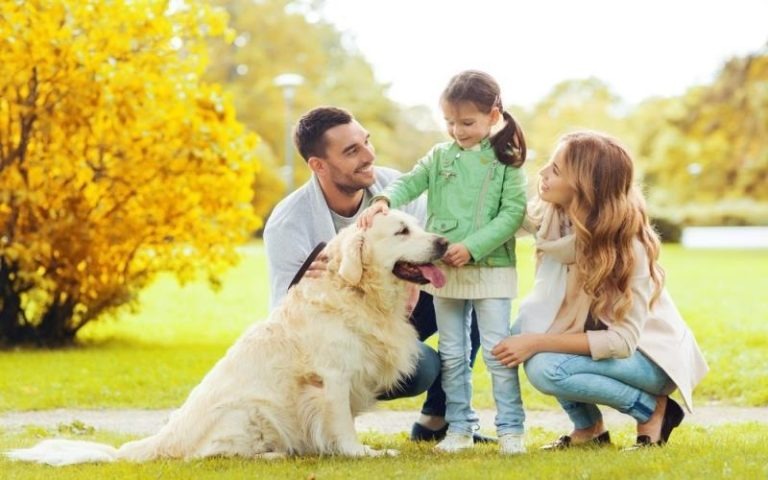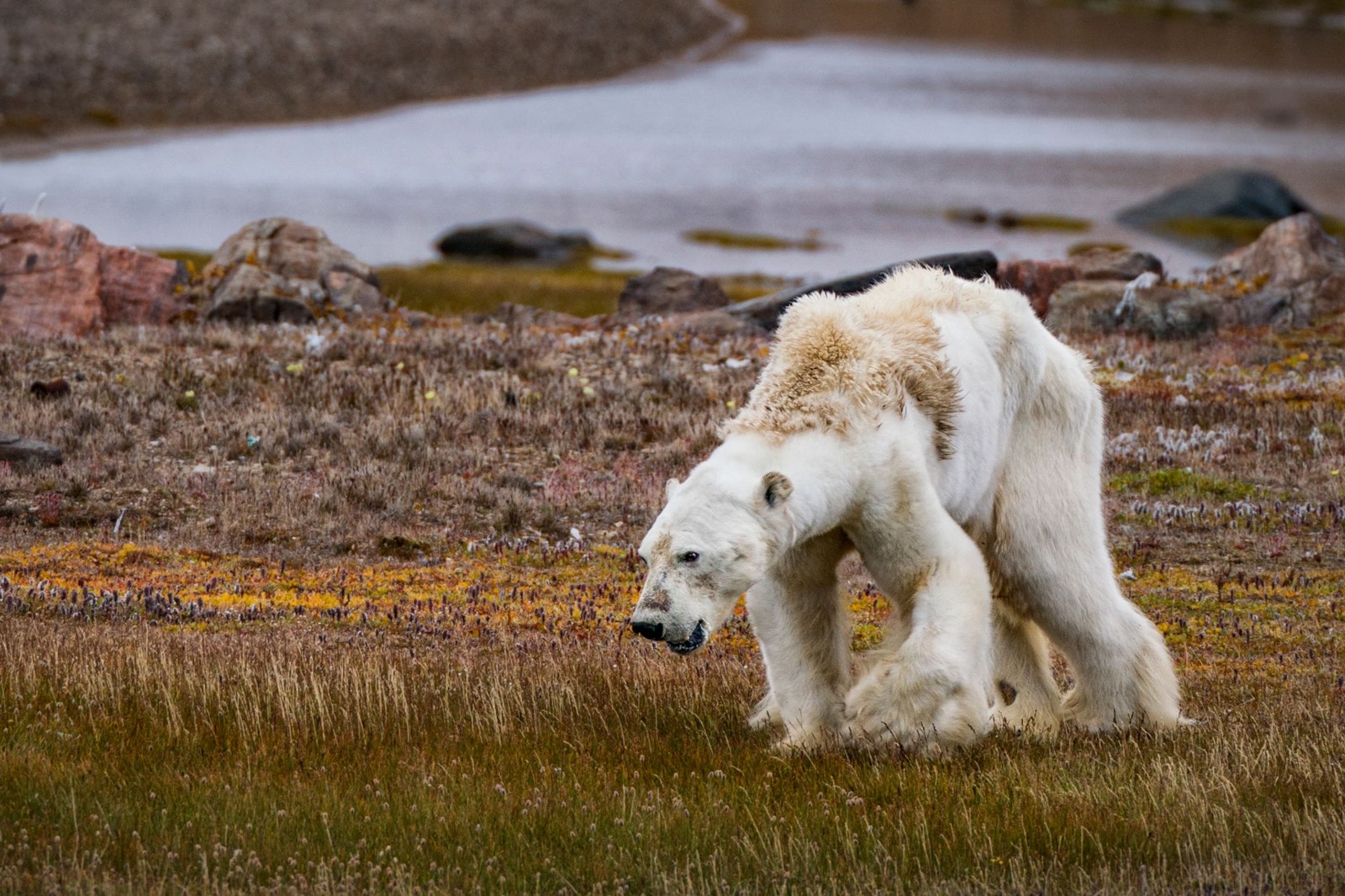
Happy Trails: How to Make Long Car Rides Comfortable for Your Pet
Traveling with pets doesn’t have to be stressful—this guide offers expert-backed tips, essential gear suggestions, and behavioral strategies to ensure a safe, relaxing ride for pets and their humans.
🐶 Pet Star
44 min read · 12, Apr 2025

Understanding Your Pet’s Travel Needs
Every pet is different. Cats, dogs, rabbits, even birds—each animal reacts differently to long car rides. Some eagerly hop in, while others might show signs of stress or motion sickness. Before planning a long journey, it's crucial to understand your pet's unique needs and temperament.
Recognizing Travel Stress in Pets
Look for these common signs of stress during travel:
- Excessive panting or drooling
- Whining or yowling
- Restlessness or pacing
- Vomiting or diarrhea
- Excessive licking or yawning
According to a 2022 survey by the American Pet Products Association, 39% of pet owners report their pets show signs of anxiety during travel. Recognizing these early signs can help you intervene before the trip becomes traumatic for your furry friend.
Consult Your Veterinarian
Before embarking on a long trip, talk to your vet—especially if your pet has health concerns or a history of anxiety. Your vet might recommend anti-anxiety medications, natural supplements (like CBD or melatonin), or even anti-nausea prescriptions. Veterinary behaviorist Dr. Lisa Radosta recommends acclimating pets gradually to the car weeks before travel, especially if it's their first major trip.
Pre-Trip Preparation: Planning for Comfort and Safety
Invest in the Right Travel Gear
To make your pet’s ride as cozy and secure as possible, you’ll need proper travel accessories. Here’s what to look for:
- Pet Carriers & Crates: Choose well-ventilated, crash-tested carriers appropriate for your pet’s size. Look for ones labeled "airline-approved" or "car-safe."
- Harnesses and Seatbelt Attachments: For dogs, a seatbelt harness keeps them safe while allowing some mobility.
- Car Seat Protectors & Hammocks: Waterproof and easy to clean, these help reduce mess and give your pet a comfy, secure place to relax.
Pro Tip: Introduce your pet to new gear well in advance of travel to help them adjust gradually.
Plan Pet-Friendly Stops
Use apps like BringFido or PetFriendly to map out rest stops, parks, and pet-welcoming areas. For every 2-3 hours of driving, plan a break so your pet can stretch, hydrate, and relieve themselves. This not only improves their physical comfort but also reduces anxiety.
Creating a Comfortable In-Car Environment
Temperature and Ventilation Control
Pets are more sensitive to heat than humans. Keep the car temperature comfortable (ideally between 68-72°F or 20-22°C) and ensure air circulation is steady. Never leave your pet alone in the car—temperatures can rise to dangerous levels within minutes.
According to the American Veterinary Medical Association (AVMA), the interior of a car can reach over 100°F in just 10 minutes on an 85°F day—even with the windows slightly open.
Noise and Sound Soothing
Sudden loud noises, honking, or engine sounds can startle pets. Reduce volume levels, and consider playing calming music or white noise. Studies show that classical music and specially composed “doggy playlists” can significantly lower stress levels in traveling pets.
Smell and Familiarity
Place a blanket, toy, or piece of your clothing with your scent in your pet's carrier. Familiar smells can comfort pets and reduce anxiety during a long ride.
Feeding and Hydration Tips on the Road
Feed Strategically Before Travel
Avoid feeding your pet immediately before the trip. A light meal 3-4 hours before departure can help reduce nausea. For longer trips, bring pre-portioned meals in sealed containers.
Pet Nutritionist Tip: Choose travel-friendly treats that are easy to digest. Freeze-dried meats, soft chews, or calming snacks can work wonders.
Always Have Fresh Water Available
Hydration is vital. Use spill-proof water bowls or travel bottles with attached dispensers. Stop often for hydration breaks, especially during warmer months.
Expert Suggestion: Bring your pet’s usual water from home to avoid stomach upsets from unfamiliar tap water.
Behavioral Strategies for a Smooth Ride
Practice Short Drives First
If your pet isn't used to traveling, start with short car rides and gradually increase the time. Praise them for calm behavior and reward them after each trip.
Positive Reinforcement is Key
Bring high-value treats and toys. Reward relaxed behavior, and avoid punishing anxious reactions. Over time, your pet will associate car travel with good experiences.
Use Calming Products
There are various calming aids available:
- Adaptil or Feliway Sprays: These mimic calming pheromones.
- CBD Treats or Oils: Non-psychoactive and vet-approved options exist.
- ThunderShirts: Compression garments that can soothe anxiety in both dogs and cats.
Health and Safety Essentials
ID Tags and Microchips
Ensure your pet has an up-to-date ID tag and is microchipped. Bring a recent photo of your pet in case they get lost.
First Aid Kit for Pets
Include items like:
- Gauze and bandages
- Tweezers and scissors
- Antiseptic wipes
- Emergency contact numbers
- Any medications your pet needs
The American Red Cross also offers a Pet First Aid app with emergency guidance for pet injuries on the go.
Vaccination and Medical Records
Always carry vaccination certificates, particularly if crossing state lines or international borders. Some states and countries have specific requirements (e.g., rabies vaccines or parasite treatments).
Choosing Pet-Friendly Routes and Destinations
Avoid High-Traffic or Hazardous Routes
Long stretches without stops, extreme weather conditions, or high-traffic highways can add stress. Choose scenic or less congested routes with ample rest stops.
Research Pet-Friendly Hotels and Campgrounds
Websites like GoPetFriendly.com or TripAdvisor's pet section help you find accommodations that welcome pets. Look for places with:
- Pet beds
- On-site play areas
- Walking trails nearby
Traveler Insight: Some hotel chains, like Kimpton and La Quinta, are renowned for pet-friendly policies and even offer pet room service!
Special Considerations for Different Types of Pets
Dogs: Most Common Travelers
Dogs are often the easiest travel companions. Still, breed, age, and size matter. Brachycephalic breeds like Bulldogs or Pugs require more ventilation and cooling due to breathing issues.
Cats: Masters of Routine
Cats prefer routine and may resist travel. Use enclosed carriers with minimal external stimulation and calming sprays. Avoid letting cats roam freely in the vehicle—they may panic and cause accidents.
Small Mammals and Birds
Rabbits, guinea pigs, and birds can travel but require stable temperatures and minimal jostling. Secure carriers in place and cover part of the carrier to reduce visual stimulation.
Entertainment and Engagement During the Ride
Mental Stimulation for Dogs
Puzzle toys, chew bones, or audio interaction (yes, there are dog podcasts!) can help. Rotate toys during stops to keep things fresh.
Safe Toys for Cats
Crinkle toys or catnip-stuffed plushies can provide comfort. Interactive laser pointers during rest stops (inside the car or a safe enclosure) give a chance to burn energy.
Training Your Pet for Long Road Trips
Conditioning Through Repetition
Begin training weeks ahead. Use these steps:
- Let your pet explore the parked car.
- Start the engine without moving.
- Drive around the block.
- Gradually extend trip duration.
Create a “Safe Space” in the Car
Designate one part of the car as your pet’s domain—ideally their carrier, with consistent smells and familiar bedding. Predictability helps them feel secure.
Traveling with Multiple Pets
Plan Seating and Space Wisely
If you're bringing more than one pet, ensuring each has enough room is vital. Crowding can lead to stress, conflict, or even injury. Use multiple carriers if needed, and secure each properly to prevent sliding or tipping.
For dogs, rear-seat hammocks with dividers can provide shared but separated spaces. For cats or smaller animals, stack carriers safely or use pet travel crates with multi-compartment options.
Monitor Interactions Closely
Even pets who get along at home might behave differently in a confined, moving space. Watch for signs of tension like growling, hissing, or staring. Make it a rule to never allow free-roaming unless you're parked and supervising closely.
Pro Tip: Keep a barrier or blanket between carriers if pets seem agitated by each other’s presence. Out of sight often means out of mind.
What to Pack: Your Pet Travel Checklist
Packing smartly can make all the difference. Here’s a comprehensive list of items to bring:
Essentials
- Crate or carrier
- Harness, leash, and collar with ID tag
- Spill-proof food and water bowls
- Travel water bottle
- Pet food (plus extra portions)
- Waste bags or litter box and scoop
- Medications and medical records
- Pet bed or blanket
- Toys and chews
- First aid kit
Extras That Make a Difference
- Calming spray or supplements
- Extra towels and cleaning supplies
- Seat covers or car hammock
- Backup leash and collar
- Portable fan or cooling mat (in warm climates)
- Paw balm (for hot or icy surfaces)
- Grooming supplies (especially for long trips)
Create a travel bin or backpack just for your pet’s supplies. Being organized helps reduce stress when you need something quickly on the road.
Addressing Motion Sickness in Pets
Know the Symptoms
Motion sickness is surprisingly common in pets, particularly puppies and younger animals. Symptoms include:
- Drooling
- Whining
- Lethargy
- Vomiting
- Lack of interest in surroundings
Preventive Measures
- Gradual acclimation: Start with short drives and gradually increase time.
- Positioning: Place the pet's carrier low in the back seat or in the center where movement is less extreme.
- Window tint or shades: Helps minimize visual stimulation.
- No heavy meals before travel: A light snack is better than a full stomach.
Veterinary Interventions
Ask your vet about motion sickness medication like Cerenia or Dramamine (vet-approved dosing only). Ginger-based supplements and pressure-point travel bands are natural alternatives some owners swear by.
Dealing with Potty Breaks and Accidents
Dogs
Dogs should be let out every 2–3 hours for potty breaks. Keep them leashed at all times—even the best-trained dog might bolt in a new environment. Use designated pet areas at rest stops whenever possible.
Cats and Small Pets
For cats, line the carrier with absorbent material or puppy pads. Bring a small litter box and introduce it during longer breaks or overnight stays. For rabbits or guinea pigs, use a familiar litter tray or corner pads in their carrier.
Cleaning Up Accidents
Accidents are bound to happen. Always keep:
- Disposable gloves
- Disinfecting wipes
- Enzyme cleaner (for odor control)
- Ziplock bags or waste bags
- Spare blankets or carrier liners
Quick cleanup keeps your vehicle smelling fresh and your pet comfortable.
Overnight Stays and Hotel Etiquette with Pets
Booking Smart
When booking a hotel, always call ahead to confirm the property’s pet policies—even if they’re listed as pet-friendly online. Ask about:
- Weight or breed restrictions
- Extra pet fees
- Pet amenities
- Rules on leaving pets unattended
Creating a Home-Away-from-Home
Set up your pet’s space in the hotel room just as you would at home. Use familiar bedding, toys, and feeding dishes. Stick to your pet’s normal feeding and potty routine.
Important: Never leave your pet unattended in a hotel unless absolutely necessary—and if you must, leave the "Do Not Disturb" sign on the door and alert the front desk.
Tips for Traveling Across State Lines or International Borders
State Regulations
Some U.S. states require a Certificate of Veterinary Inspection (CVI), especially when entering with certain animals. Check USDA guidelines and each state’s Department of Agriculture for details.
Crossing International Borders
International travel with pets often requires:
- Rabies vaccination certificates
- Microchip documentation
- Import permits (depending on the country)
- Tapeworm or tick treatments (common for the UK/EU)
Many countries enforce a quarantine period, so research this thoroughly. Resources like PetTravel.com and government embassy sites provide up-to-date requirements.
Flying as Part of a Road Trip?
If your trip involves flying before or after driving, ensure your pet’s crate meets IATA (International Air Transport Association) standards. Many airlines have seasonal pet travel restrictions, especially in summer months.
When Not to Travel with Your Pet
Health-Related Restrictions
Sometimes the best decision is to leave your pet at home—especially in these cases:
- Advanced age or illness
- Recent surgery or injury
- Severe anxiety or phobias
- Extremely hot or cold weather risks
Pet sitters, in-home care, or boarding facilities can offer safe alternatives. Websites like Rover or TrustedHousesitters can help you find qualified caregivers.
Signs Your Pet Isn’t Handling Travel Well
If your pet is refusing food, showing signs of chronic distress, or acting out of character despite your best efforts, consider stopping to rest or postponing the trip. Their mental and physical well-being comes first.
Preparing for the Return Trip
Don’t forget—return trips can be just as demanding, if not more so.
Check-in with Your Pet
After reaching your destination, watch how your pet adjusts. If they show signs of travel fatigue, give them time to recover before heading back.
Restock Supplies
Before the return journey:
- Refill food and water supplies
- Wash bedding or carriers
- Restock treats and medications
- Double-check ID tags and microchip info
Also, revisit your route and overnight stops. Maybe you learned some things on the way out that could make the trip back even smoother.
Real-Life Stories from Pet Travelers
Luna the Lab Mix:
"Luna hated car rides at first. She’d drool and pant the whole time. We invested in a quality harness seatbelt, introduced car rides with lots of treats, and now she jumps in like she owns the place!" – Kelsey from Arizona
Whiskers the Maine Coon:
"Our road trip to Colorado taught us that Whiskers prefers classical music and blackout curtains on her carrier. She snoozed through half the Rockies thanks to her Feliway spray and a warm blanket." – Jamie from Denver
Toby the Rabbit:
"I used to think you couldn't travel with rabbits, but Toby’s carrier with his litter box and veggies made him the chillest passenger ever. He even enjoyed watching out the window!" – Sara from Oregon
Real-life success stories remind us that with patience, prep, and a little creativity, any pet can be a road trip champ.
Conclusion
Long road trips with pets can be joyful, enriching experiences when approached with care, planning, and a deep understanding of your animal’s needs. Whether you’re cruising across the country or heading to a nearby weekend getaway, your pet’s comfort and safety should always be a top priority. From choosing the right travel gear to creating a familiar and calming environment, each thoughtful step you take makes the journey smoother—for both you and your furry (or feathered) companion.
No two pets are the same. Some may enjoy watching the world fly by through a car window, while others may need extra soothing, structure, or breaks to feel secure. By recognizing and respecting these differences, you become not just a better travel companion, but a more empathetic pet parent.
This guide aimed to arm you with practical advice backed by veterinary insights, real-world experiences, and expert recommendations. From handling motion sickness and anxiety to picking the best rest stop strategies and entertainment options, every tip was designed to help you plan a trip that feels more like an adventure and less like a challenge.
The open road awaits—and now you’re ready to take it on with your pet safely and happily by your side. Remember: the key to successful pet travel isn’t just logistics. It’s love, patience, and a commitment to making your pet feel at home, even when you’re miles away from it.
So, pack those treats, secure that harness, turn up the soothing playlist—and go make some unforgettable memories together.
Q&A for Long Car Rides with Pets
Q1: What’s the safest way for my dog to travel in a car?
A: The safest method is using a crash-tested harness seatbelt or a secured, well-ventilated crate. Avoid letting your dog roam freely, as it poses safety risks.
Q2: How often should I stop for breaks on a long drive with my pet?
A: Every 2–3 hours is ideal. Breaks allow your pet to stretch, hydrate, and relieve themselves, reducing restlessness and preventing discomfort.
Q3: Can I feed my pet right before we hit the road?
A: It’s best to feed a light meal 3–4 hours before departure. Feeding too close to travel can increase the risk of motion sickness.
Q4: How can I help my anxious cat relax during a car ride?
A: Use a cozy, covered carrier, pheromone sprays like Feliway, and familiar bedding. Avoid loud noises and keep the environment quiet and stable.
Q5: Are calming supplements or CBD safe for pets during travel?
A: Many are safe, but always consult your vet before giving your pet CBD or any calming supplement, especially if they’re on other medications.
Q6: What’s the best way to hydrate my pet during the drive?
A: Use a spill-proof travel bowl or water bottle with a pet spout. Offer water at every break and monitor for signs of dehydration.
Q7: Can my pet sit on my lap while I drive?
A: No. It’s unsafe for both of you. Unrestrained pets can cause distractions or injury in the event of sudden stops or accidents.
Q8: What should I include in a pet travel first aid kit?
A: Include gauze, antiseptic wipes, tweezers, pet-safe medications, medical records, and emergency vet contacts.
Q9: Do hotels allow pets to stay in the room alone?
A: Many don’t. Always check the hotel’s pet policy. If allowed, never leave your pet unattended for long, and alert staff when you do.
Q10: How do I know if my pet is too stressed to travel?
A: Signs include refusal to eat, continuous vocalization, vomiting, trembling, or hiding. If symptoms persist despite preparation, consult your vet before continuing.
Similar Articles
Find more relatable content in similar Articles

How Pets Strengthen Family Bonds...
Pets are more than just compan.. Read More

The Growing Trend of Therapy and Emotional Support Ani..
Exploring the remarkable rise .. Read More

Pets and Mental Health: The Science Behind Emotional H..
Discover the profound impact o.. Read More

How Climate Change Affects Wild and Domestic Animals...
Climate change is dramatically.. Read More
Explore Other Categories
© 2024 Copyrights by rPets. All Rights Reserved.